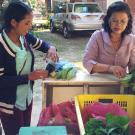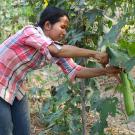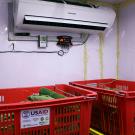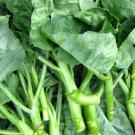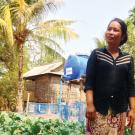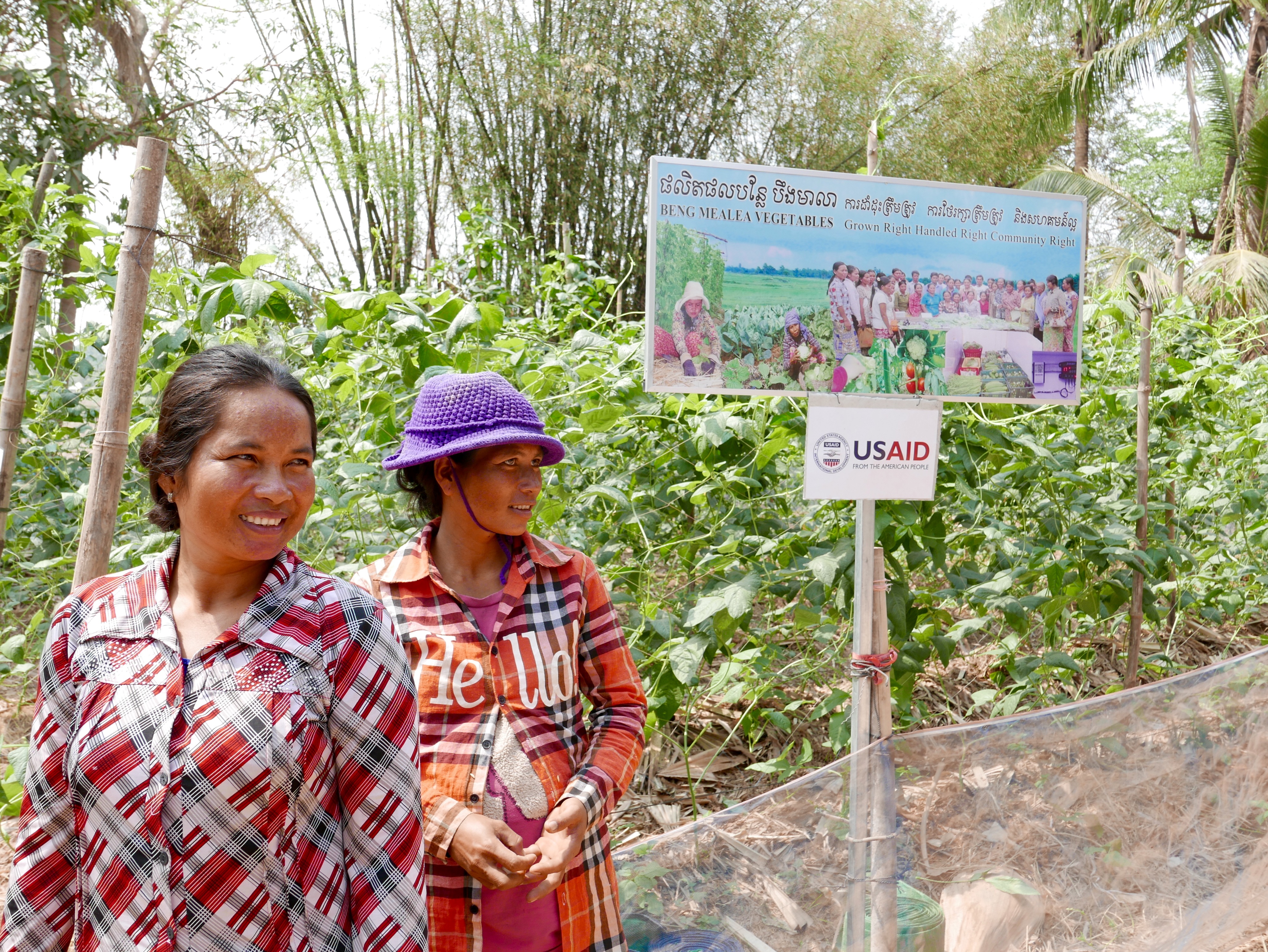
In regions of Cambodia and Nepal, water can be scarce for extended periods, negatively affecting horticultural crop production and food security. Water- and labor-saving technologies, including rainwater harvest and storage, drip irrigation, and conservation agriculture systems, can boost food security and climate-change resiliency. These technologies help to control erosion, increase land productivity, enhance farmer incomes, and improve water quality.
A Horticulture Innovation Lab team, led by Manny Reyes of Kansas State University, works with marginalized smallholder farmers who farm very small vegetable plots (100 m²) with limited sources of water. The team trains farmers about drip irrigation, conservation agriculture, and rainwater harvesting, and provides capital incentives to enable farmers to take the risk of trying new practices.
The research team is also identifying market pathways for smallholders to sell their increased vegetable production.

